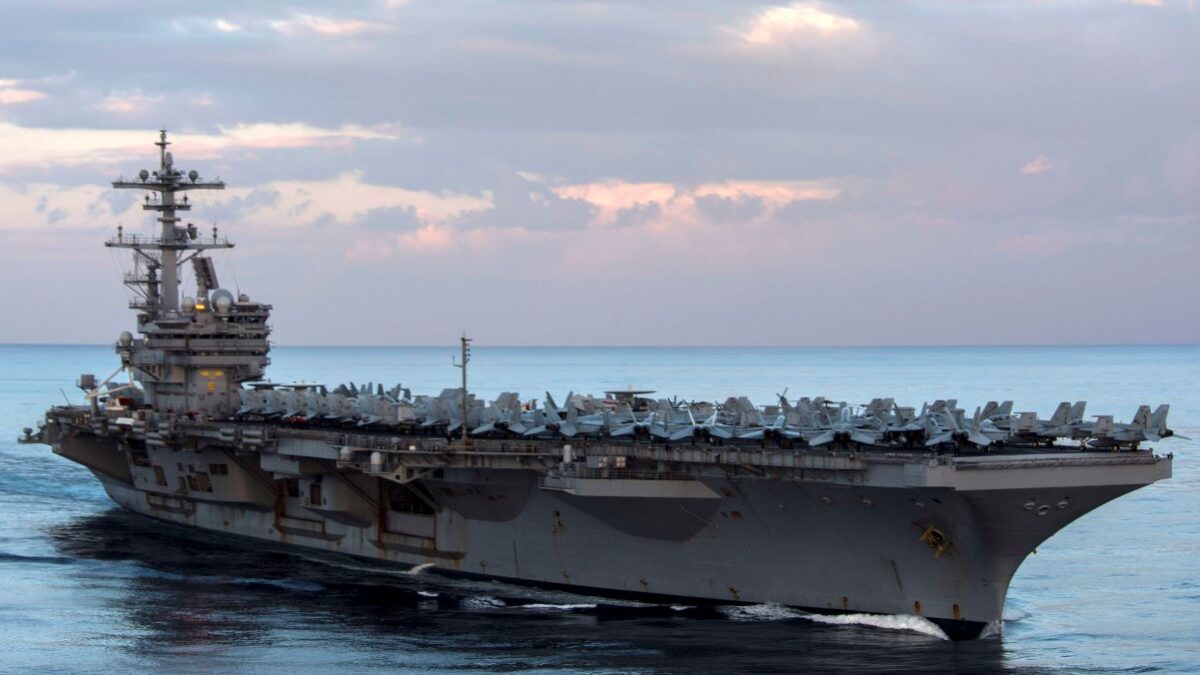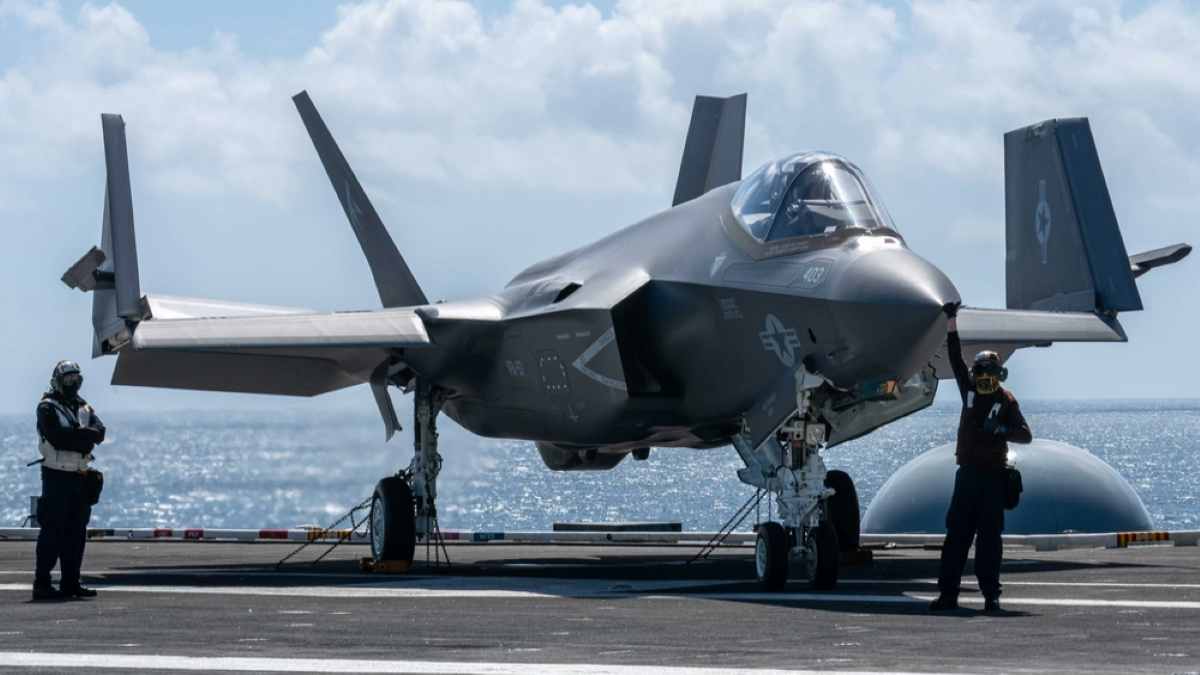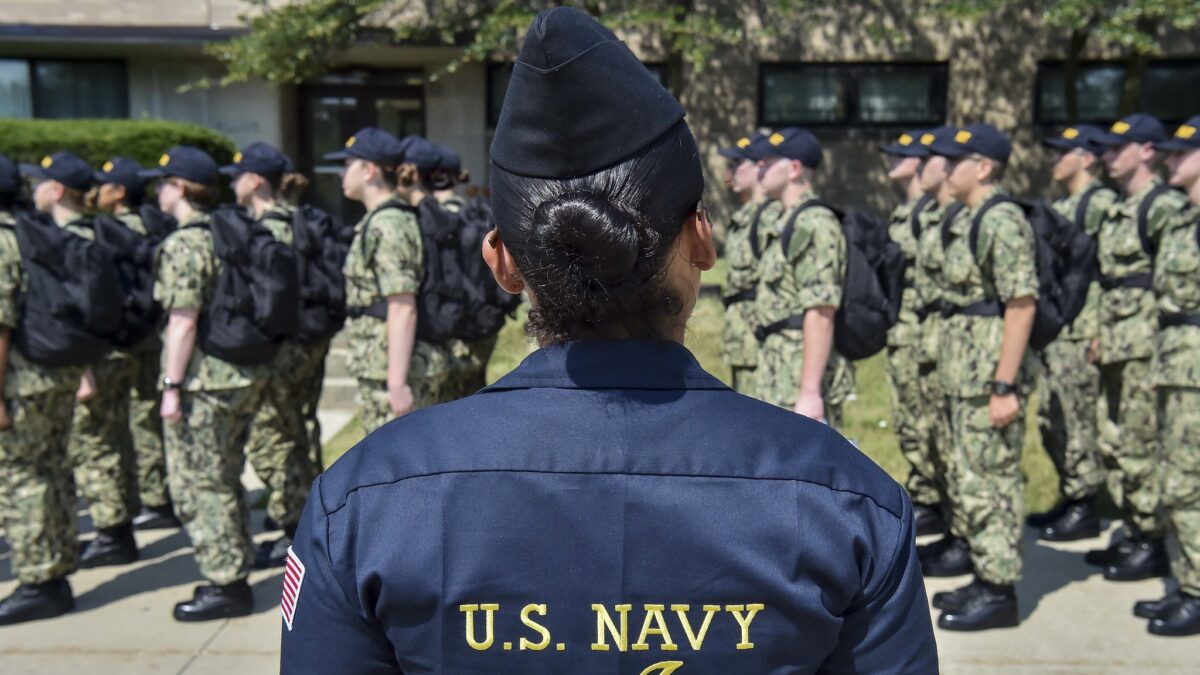For centuries, it has been a critical objective for any global power to maintain a battle-ready navy. U.S. President Theodore Roosevelt gave perhaps the best argument for American sea power during his second annual address to Congress. While evoking elements of his “big stick diplomacy,” Roosevelt signified the influence naval powers hold in cultivating peace among nations, stating “A good Navy is not a provocative of war. It is the surest guaranty of peace.”
In the decades that followed, the U.S. Navy proved itself instrumental in fulfilling Roosevelt’s sentiments and establishing the U.S. as a leading global power. During World War II, U.S. naval forces were critical in liberating the Pacific from imperial Japan. The Navy also continued its peacekeeping role throughout the Cold War, preventing potentially disastrous conflicts in the Taiwan Strait, assisting U.S. allies during the Korean War, and stymying Soviet aggression, to name just a few.
In the years since, however, America’s fleet has suffered tremendous setbacks. Failure to maintain a sizeable fleet and meet shipbuilding targets have become growing issues that — despite their importance to U.S. national security — have been ignored by large swaths of America’s political class. If left unaddressed, these problems threaten to upend America’s maritime power.
The Fleet and Shipbuilding Today
The size of the U.S. fleet has shrunk considerably following the end of the Cold War, with ship retirements outpacing production of new vessels. In 1991, for instance, the Navy was comprised of 529 ships. By 2001, that number had shrunk to 316 and would continue to drop to a staggering 271 vessels by 2015.
As of Monday, the Navy has a total battle force of approximately 300 ships, still substantially short of the 355 required by federal law.
But it’s not just the size of the Navy that’s decreased. Since World War II, the U.S. has also witnessed a steady decline in the number of public shipyards responsible for maintaining a battle-ready fleet. At the time, the U.S. operated 11 public shipyards, slightly more than the typical seven to nine the country possessed in the century preceding the global conflict. According to The Heritage Foundation, public yards stopped ship construction altogether and shifted their focus towards solely maintenance work in the early 1960s. It was during this time that private shipyards were found to be 30 to 40 percent more efficient at constructing new vessels than public ones, leading to the closure of three public shipyards in the years that followed.
Legislation passed in 1988 further required the military to reevaluate the need for many of its existing installations, leading to the closure of four more public shipyards and leaving the Navy with its remaining four — all of which have required modernization upgrades for years.
As of 2020, the Navy also contracts with at least 22 private shipyards for shipbuilding and other maintenance-related work.
Root Problems
So why is it that it’s been more than 20 years since the Navy last met its shipbuilding targets? According to Brent Sadler, a senior research fellow for The Heritage Foundation’s Center for National Defense, one of the biggest factors hindering the Navy’s shipbuilding apparatus is an inconsistent, long-term vision of how to grow the fleet.
“Inconsistencies are constantly changing,” Sadler told The Federalist. A long-range plan for the Navy “kind of follows the whims of one administration to the next too often.”
In May, the Biden administration released its long-range shipbuilding plan for fiscal year 2024, which Sadler previously claimed “grossly understate[s] how many new ships will be needed to ensure [U.S.] security.” Further reading of the administration’s plan reveals two of the three proposals put forward fail to get the Navy to its 355-ship fleet requirement. The third option wouldn’t do so until 2042.
Sadler further noted how inconsistent budgeting has also contributed to the Navy’s ongoing shipbuilding shortfalls, specifically pointing to constant changes in congressional leadership and Congress’s overreliance on continuing resolutions instead of a stable budget.
“Those two things matter [because] they send a signal to commercial naval shipbuilders who only make capital investments [such as] training new workers, building graving docks, deepening the piers, or buying new cranes — they only do that if they have an order from the Navy on-hand and that money is predictable. … [T]hey haven’t been getting that signal for almost 30 years, and so commercial naval shipbuilding has atrophied.”
Bryan Clark, a senior fellow at the Hudson Institute, echoed somewhat similar sentiments. In his remarks to The Federalist, Clark noted how the “high cost of manning and maintaining the current fleet” is a major issue hindering the Navy’s ability to grow its force.
“The Navy is shrinking because they’re having to retire ships early” due to the cost of maintaining them, Clark said. “They’re having to reduce the number [of ships] they buy because they don’t have enough money to buy more, and they know that every new ship they buy is another ship in the fleet that has to be maintained.”
Clark went on to explain that the shipbuilding industry’s difficulty in recruiting and training workers to man the shipyards is also a notable issue contributing to the Navy’s shipbuilding shortfalls. In 2019, a U.S. Naval Institute report highlighted these concerns among industry leaders, who pointed to factors such as “an aging workforce, lack of stability in the contract workload,” and young Americans’ lack of interest in shipyard work as reasons for the increasing problem.
Possible Solutions
While the Navy’s shipbuilding woes can’t be fixed with the snap of a finger, there are potential solutions that may alleviate some of the branch’s existing issues.
According to Sadler, one possible remedy to the inconsistencies regarding the Navy’s long-term strategy and budgeting problems is for Congress to legislate such issues separate from the National Defense Authorization Act (NDAA). The NDAA — which Congress is currently considering for the 2024 fiscal year — provides funding for all U.S. military branches and includes monies for naval shipbuilding. Rather than tie the Navy’s critical infrastructure to the NDAA, Sadler recommends creating a separate “Naval Act” to give the branch’s issues the attention they deserve.
With the NDAA, “there’s a lot of politicking and inner-service rivalries that” get in the way, Sadler said. “A separate Naval Act [would focus on] the ships that the Navy and the administration agree they need to build that are currently in construction, and provide the funding” for future shipbuilding.
Sadler went on to explain how such an approach is more fiscally sensible, as it shifts the risk of potential cost increases due to inflation from U.S. taxpayers to contracted shipyards.
“We used to buy [ships] upfront [at] full price. We’d say, ‘Here’s the money for a ship, go build me a ship, get it to me by this time.’ It was very simple, very straightforward,” Sadler said. “You want to be able to get the predictability and you want to get the money into the shipyard so that they can make the capital investments to grow their workforce and to grow their shipyard building capacity.”
To “demand the possession of a first-class navy,” as Roosevelt argued back in 1902, is not a luxury but an imperative.









